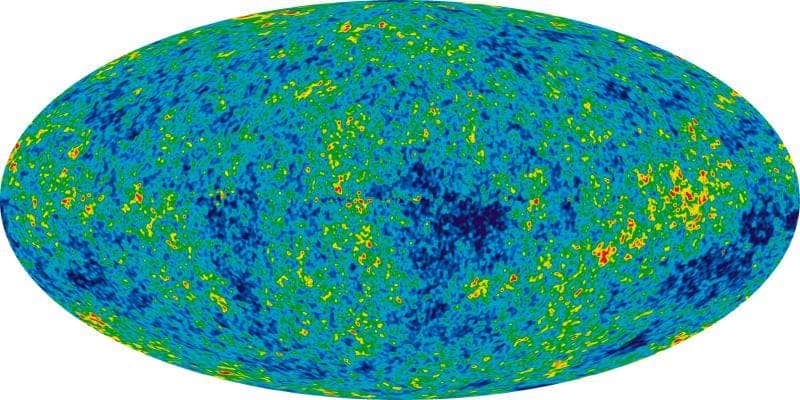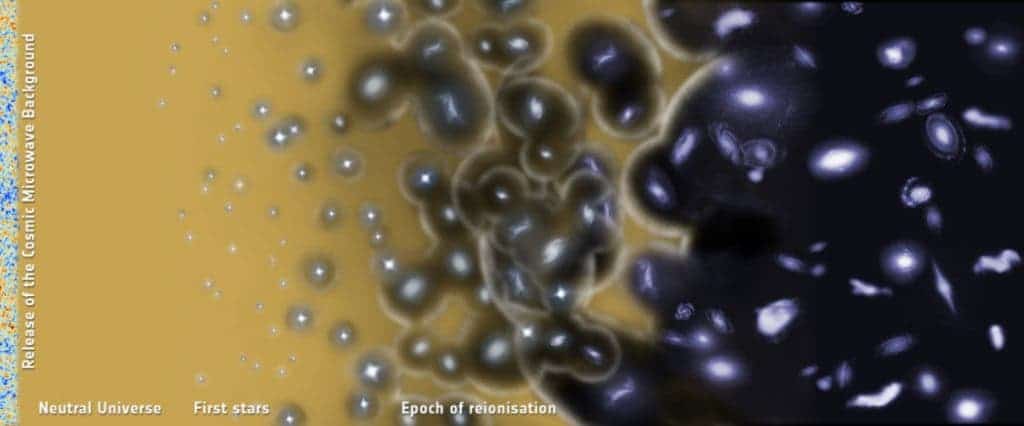The European Space Agency’s Planck satellite has revealed some information which may force us to rethink the evolution of the early Universe.
Our telescopes and other observation tools allow us to see a lot of the Universe today, but we’re so used to it in its current state that it can be hard to imagine how it looked like 13.8 billion years ago. Everything was still in its infancy, without the multitude of stars and galaxies we see today. Back then, everything was a thick, hot haze, a primordial soup of particles – mostly electrons, protons, neutrons and photons.
As the cosmos expanded, it started to cool down a bit and became more rarefied. Astrophysicists believe that the universe became transparent some 380,000 years after its birth, meaning that photons could finally travel through the universe freely. Today, we can still observe some of this ‘fossil light,’ and its distribution yields information about the history, composition, and geometry of the Universe.
This distribution is called the Cosmic Microwave Background, or CMB for short. The release of the CMB indicates the first moment in the Universe when matter was in an electrically neutral state – in other words, when electrons merged with protons to form atoms. After that, matter as we know it started to emerge, but it still took a few hundred million years for the first stars to form. These in turn started to brake down matter into electrons and protons once again, while also sending light (photons) in all directions. It didn’t take long and most — virtually all, except for a few isolated places — matter became ionized.
“The CMB can tell us when the epoch of reionisation started and, in turn, when the first stars formed in the Universe,” explains Jan Tauber, Planck project scientist at ESA.
Astronomers have conducted observations on galaxies with supermassive black holes, finding that the reionization took place when the Universe was 900 million years old. But when this process started (and therefore, when the first stars were formed) is much harder to pinpoint.
The key is still in the CMB.
“It is in the tiny fluctuations of the CMB polarisation that we can see the influence of the reionisation process and deduce when it began,” adds Tauber.
The new analysis conducted by Tauber and his team isn’t conceptually different from previous efforts, but it uses a more advanced technology from Planck’s other detector, the High-Frequency Instrument (HFI).
“The highly sensitive measurements from HFI have clearly demonstrated that reionisation was a very quick process, starting fairly late in cosmic history and having half-reionised the Universe by the time it was about 700 million years old,” says Jean-Loup Puget from Institut d’Astrophysique Spatiale in Orsay, France, principal investigator of Planck’s HFI.
This new analysis also showed that these stars were the only sources needed to account for reionizing atoms in the cosmos and that half of this process was completed when the Universe had reached an age of 700 million years.
“These results are now helping us to model the beginning of the reionisation phase,” he concluded.
It’s still a work in progress and the exact ionization age will remain a matter of debate, but the fact that we can infer so much about the early history of the Universe is simply mind blowing.
Journal References:
- Matthieu Tristram and Collaboration. Planck intermediate results. XLVII. Planck constraints on reionization history. Astronomy & Astrophysics, 2016; DOI: 10.1051/0004-6361/201628897
- Planck Collaboration. Planck intermediate results. XLVI. Reduction of large-scale systematic effects in HFI polarization maps and estimation of the reionization optical depth. Astronomy & Astrophysics, 2016; DOI: 10.1051/0004-6361/201628890











